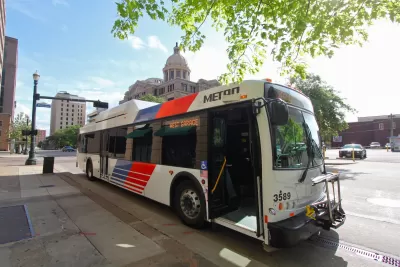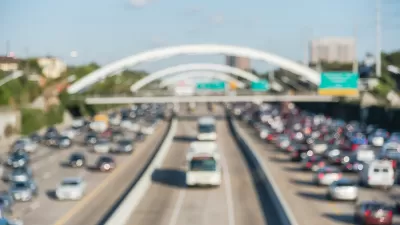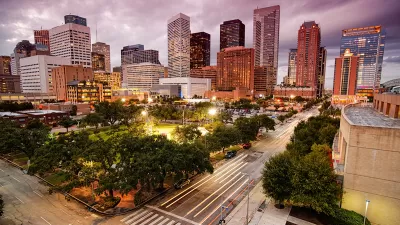Hindered by the pandemic and other factors, ridership numbers have been disappointingly low on the city's first BRT, but Metro officials are undeterred in their plans for future BRT lines.

Houston's new Silver Line bus rapid transit (BRT) line is seeing disappointingly low ridership in its first year and a half of operation, reports Dug Begley. "The line, which comes every 12 minutes and avoids Galleria-area congestion, is a vital route for those using it, but carrying less than 10 percent of the riders it was built for on opening day." The line is serving fewer than 800 riders a day, far fewer than the 12,000 daily riders predicted by Metro. "Park and ride service, which was expected to be a big lure for commuters into Uptown to hop the Silver Line, dropped from 33,000 trips on a typical day in the region to fewer than 4,000 when the BRT began operating on Post Oak."
But the city's transit officials are cautiously optimistic about the future of its other BRT projects, calling them "50-year projects" whose ridership will grow with time. "Many of those plans feed into major routes, including the Silver Line. As part of the $7.5 billion plan approved by voters in 2019, Metro anticipates making high occupancy toll lanes along many freeways bi-directional, meaning bus lanes both ways for park and ride lines to Uptown and downtown Houston, feeding into the Uptown transit center."
FULL STORY: Uh oh, Silver: Houston's first bus rapid transit line carries only fraction of ridership Metro predicted

Trump Administration Could Effectively End Housing Voucher Program
Federal officials are eyeing major cuts to the Section 8 program that helps millions of low-income households pay rent.

Planetizen Federal Action Tracker
A weekly monitor of how Trump’s orders and actions are impacting planners and planning in America.

Ken Jennings Launches Transit Web Series
The Jeopardy champ wants you to ride public transit.

Crime Continues to Drop on Philly, San Francisco Transit Systems
SEPTA and BART both saw significant declines in violent crime in the first quarter of 2025.

How South LA Green Spaces Power Community Health and Hope
Green spaces like South L.A. Wetlands Park are helping South Los Angeles residents promote healthy lifestyles, build community, and advocate for improvements that reflect local needs in historically underserved neighborhoods.

Sacramento Plans ‘Quick-Build’ Road Safety Projects
The city wants to accelerate small-scale safety improvements that use low-cost equipment to make an impact at dangerous intersections.
Urban Design for Planners 1: Software Tools
This six-course series explores essential urban design concepts using open source software and equips planners with the tools they need to participate fully in the urban design process.
Planning for Universal Design
Learn the tools for implementing Universal Design in planning regulations.
Heyer Gruel & Associates PA
Ada County Highway District
Institute for Housing and Urban Development Studies (IHS)
City of Grandview
Harvard GSD Executive Education
Toledo-Lucas County Plan Commissions
Salt Lake City
NYU Wagner Graduate School of Public Service





























